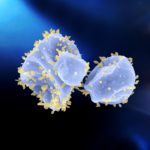Link to Pubmed [PMID] – 31311861
Proc. Natl. Acad. Sci. U.S.A. 2019 Jul 30;116(31):15645-15650
Ammonia-oxidizing archaea (AOA) from the phylum Thaumarchaeota are ubiquitous in marine ecosystems and play a prominent role in carbon and nitrogen cycling. Previous studies have suggested that, like all microbes, thaumarchaea are infected by viruses and that viral predation has a profound impact on thaumarchaeal functioning and mortality, thereby regulating global biogeochemical cycles. However, not a single virus capable of infecting thaumarchaea has been reported thus far. Here we describe the isolation and characterization of three spindle-shaped viruses (NSVs) that infect AOA and are distinct from other known marine viruses. Although NSVs have a narrow host range, they efficiently infect autochthonous strains and display high rates of adsorption to their host cells. The NSVs have linear double-stranded DNA genomes of ∼28 kb that do not display appreciable sequence similarity to genomes of other known archaeal or bacterial viruses and could be considered as representatives of a new virus family, the “Thaspiviridae.” Upon infection, NSV replication leads to inhibition of AOA growth, accompanied by severe reduction in the rate of ammonia oxidation and nitrite reduction. Nevertheless, unlike in the case of lytic bacteriophages, NSV propagation is not associated with detectable degradation of the host chromosome or a decrease in cell counts. The broad distribution of NSVs in AOA-dominated marine environments suggests that NSV predation might regulate the diversity and dynamics of AOA communities. Collectively, our results shed light on the diversity, evolution, and potential impact of the virosphere associated with ecologically important mesophilic archaea.



